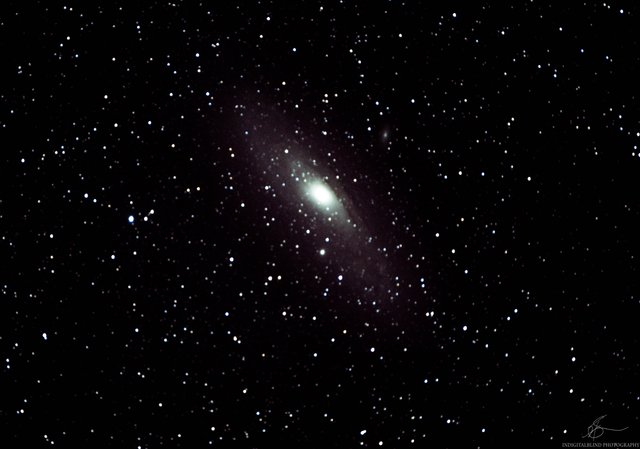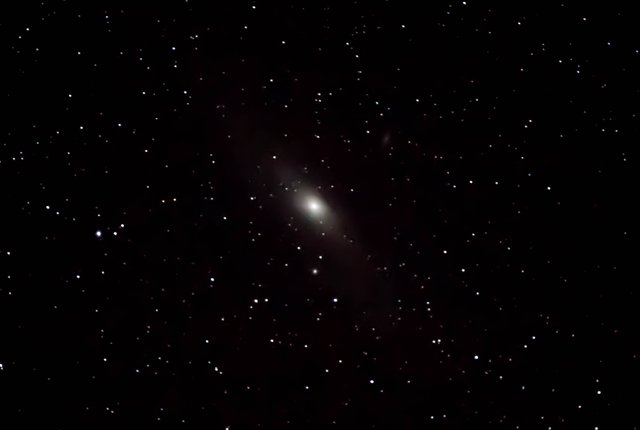Deep Space Photography Series - Taking Photos Of Andromeda Galaxy
A couple of weeks ago was this rare event, clear skies when it was dark. As soon as I saw that happening, I took my gear and drove a little away from the city to be in a more darker place. In fear of missing out clear skies and lack of gas in the tank, I drove 15 kilometers out of town. This is however not enough to get rid of Tallinn city light pollution but it was dark enough to get something done.
This is the second time when I attempted to take photos of Andromeda galaxy. If you see my posts then maybe you remember the very long post I made the first time. This is not that long, I promise.
Technicals
When I was in the middle of some field in some unknown place, I set up my camera on a tripod and left the camera cooling for about 15 minutes. Since I use the stacking method, it is crucial for my camera have almost the same sensor temperature at all times of this session. It was about -4 Celsius at the time and this cooled down my sensor pretty quickly. USEFUL TIP: Higher the sensor temperature generally results in higher noise on the photo.
Then I focused the camera on 300mm, set white balance on daylight and found Andromeda galaxy in the skies. It's easy to find when you know where to look for it. After some test shots I went with 10k ISO, 1.6sec shutter speed ( can't go any higher due to getting star trails when on 300mm zoom. Aperature was 2.8. I also set my camera to exposure delay mode, so mirror actually flips a second earlier before the camera starts to take a photo, therefore eliminating any vibrations from mirror flipping. I also used an external remote for shutter button and I set it on interval shooting.
After every 15 shots, I had to move the camera because Andromeda drifts off the frame.
So let's see the photo, you came for the photo, not for a whole bunch of technicals. You can still expect me to write this in every DSP series I do in the future :D
The photo is stacked together of 135 light frames ( 2.16 min total exposure time ), 60 dark frames and 50 bias frames.
Used gear: Nikon D5600, Tamron 105-300mm f2.8, no guiding, no telescope.
Andromeda and M110 smaller galaxy in the back.

Andromeda galaxy is pretty much a whole galaxy like ours( Milkyway) and its located 2.5million light years from us you can also see a small Messier 110 galaxy which is 2.7million light years from us. It is calculated by scientists that Andromeda will collide with Milkyway eventually (approx. around 4 billion years ). Currently, Andromeda is moving towards us 110 kilometers per second. Just imagine when this galaxy will take half of our sky when it's finally close. Wish I could see that.
You can see the Andromeda section has a lot of grain and noise. Well, this is what you get on 10k ISO and with no guiding to take longer exposures. I am not exactly pleased with the result, my hopes were higher but there is always next time to do things differently. Still, you can see galaxy's dust rings a bit. I could have removed all the noise but this would have destroyed all the little detail I have here.
Like I said I'm not pleased with the result but it's a huge step up from the first session.
As you see, the difference is immense. This is only a single exposure, ISO 8k, 1.6sec shutter speed and f2.8. Also, I heavily canceled the noise after which made it even worse.

This weekend is hopefully the next time I have clear skies so I'll see if I do another Andromeda or take some other deep-sky object this time for a change. Either way, another DSP post is coming in the future!.

I don't know - that looks pretty good to me.
Question - you may have covered this in a post I missed, but:
What are the 'dark' & 'bias' frames?
Its quite okay but there is definitely more I can do.
Basically the idea is to shoot dark and bias frames with lens cap on and with ceratin settings. They record unwanted signals on photo. After stacking these frames, program does its job and drastically reduces the overall noise/grain onnthe final photo.
Of course there is more science to these frames but this is short explanation :
Ah, thanks!
This post has been upvoted by the ASTROSteem curation team and curation trail.
ASTROSteem is a project with the goal to promote and support astronomical content on the STEEM blockchain. If you wish to support the authors of astronomical content and the ASTROSteem project you can get more informations here.
Congratulations! Your post has been selected as a daily Steemit truffle! It is listed on rank 20 of all contributions awarded today. You can find the TOP DAILY TRUFFLE PICKS HERE.
I upvoted your contribution because to my mind your post is at least 3 SBD worth and should receive 171 votes. It's now up to the lovely Steemit community to make this come true.
I am
TrufflePig, an Artificial Intelligence Bot that helps minnows and content curators using Machine Learning. If you are curious how I select content, you can find an explanation here!Have a nice day and sincerely yours,

TrufflePig